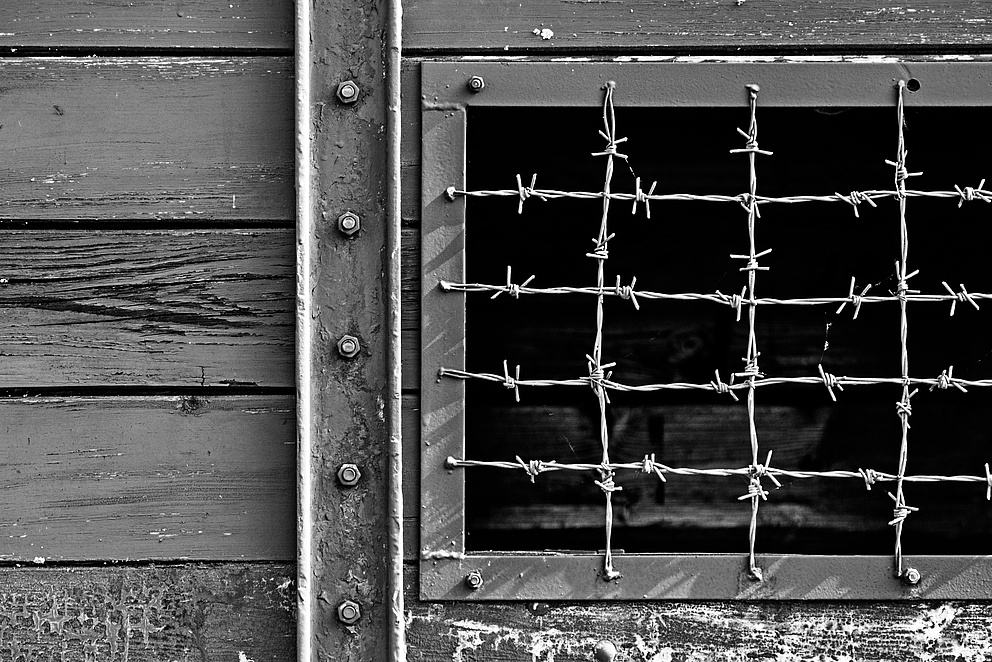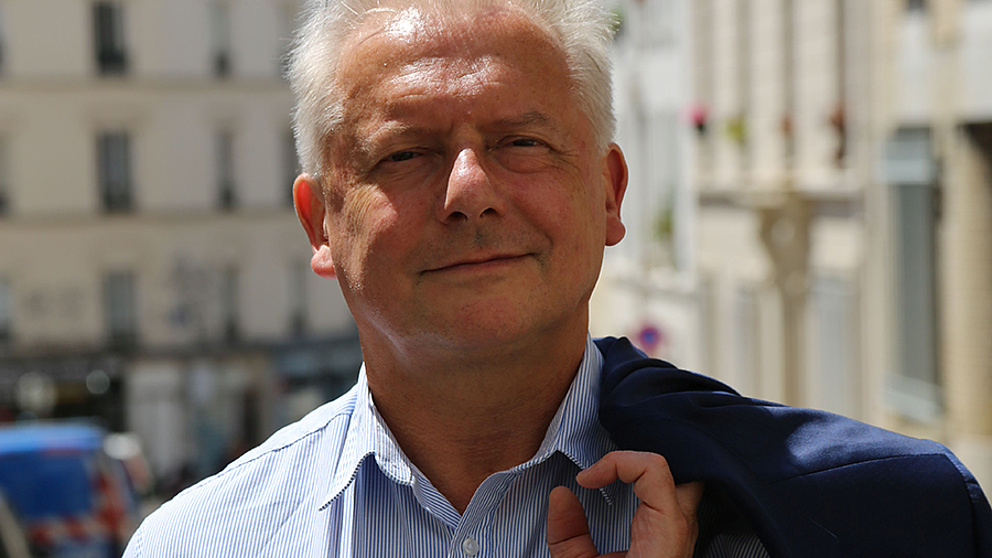

Contact
Press, Communications and Marketing
Tel.: +49 228 833-144
Fax: +49 228 833-441
presse[at]avh.de
How could it happen? Whilst hundreds of thousands of people in Germany are currently taking to the streets to protest against rightwing thinking, hatred continues to proliferate in Europe and the world. It is hatred that is also directed against Jews, that is expressed in antisemitic speeches, poisons public discourse and already led to disaster once before.
The Humboldtian Marc Sagnol has repeatedly addressed the German-French and Eastern European history of the Jewish people and the fate of authors and poets under National Socialism. In 2023, he was also helping in the efforts to include the audio-archive of Claude Lanzmann’s film “Shoah” in the World Heritage documents. In his own work, Sagnol traces the “forgotten Holocaust” in Moldavia, Ukraine, Russia and Poland. Because it happened – everywhere. On the occasion of Holocaust Remembrance Day, we asked the Humboldt Research Fellow why it is particularly important to uphold the memory of the Shoah today.
Humboldt Foundation: Mr Sagnol, What does Holocaust Remembrance Day mean to you personally?
Marc Sagnol: Although there were no immediate victims of the Shoah in my own family (my grandfather was able to flee to France before the war and from there to Algeria), despite Jewish roots in Eastern Europe which have occupied me for years, the thought of the incredibly fast, perfected, industrialised and almost total annihilation of the Jewish people in the Second World War has been with me and affected me deeply since my youth and early adulthood. The extermination of entire families, entire villages and towns, of ghettos and camp inmates, the destruction of an entire culture, a language and literature moved me greatly. When I was only 20, I travelled to Poland and discovered abandoned synagogues and overgrown graveyards in many villages that bore witness to their former high culture and its demise.
Which places you visited made a particular impression on you?
Through my work I’ve spent a lot of time travelling in Ukraine, Belarus and Russia and have seen countless places of annihilation there – not just the famous ones like Babi Yar but also forgotten and barely cared for places in Lysynychi Forest, near Lviv, Bronica Forest, near Drohobycz, Bronnaya Góra, 80 km from Brest, Ponary Forest, near Vilnius, the destroyed places in Kamenets Podolskiy, in Równo (“Sosonki”), in Berdychiv, in Pechera on the Bug River, in Bogdanówka on the Bug, in Kharkiv (“Drobytzky Yar”), in Taganrog (“Petrushino”). I also remember Rostov-on-Don, that terrible snake gorge where the psychoanalyst and pupil of Jung, Sabina Spielrein, and 20,000 other people died. This all affected me deeply because these places are hardly known about today.

Marc Sagnol, originally from France, is a philosopher, writer, photographer and film director. He came to Frankfurt am Main in 1990 on a Humboldt Research Fellowship and then to Berlin and Potsdam. Sagnol was a member of the editorial staff of Les Temps Modernes and director of the Institut français in Dresden, Kiev, Moscow and Erfurt. His book Celan, Weißglas. Die Wasser des Bug (Aachen: Rimbaud 2024) has just been published.

You have a special relationship with Claude Lanzmann, the French documentary film director, and were just recently able to achieve great success as a mediator for his work at UNESCO.
Claude Lanzmann’s film “Shoah” had a huge influence on me. I worked together with Claude Lanzmann from 2000, initially during the shooting of “Solibot” in Belarus, then on the magazine “Les Temps Modernes” in Paris. Thanks to a German-French application, the film “Shoah” was included in UNESCO’s World Heritage collection in May 2023. Together with Susanne Zepp-Zwirner (University of Duisburg-Essen), Dominique Lanzmann, the chair of the Association Claude et Felix Lanzmann (Paris) and the Jewish Museum in Berlin I was able to mediate this step successfully and am very proud that we have managed to honour Lanzmann’s work in this way. His work is a literary monument, comparable with Homer’s “Iliad” and says more about the subject than a thousand scholarly papers.
And yet you, too, have worked on the subject academically. How exactly?
In my academic work I have dealt with the topic indirectly, both in my research on Walter Benjamin, where I focus on the meaning of mourning and tragedy in the German philosophical tradition, and in my literary work on Paul Celan, Bruno Schulz and Franz Kafka as well as Immanuel Weißglas and Selma Meerbaum. My recently published book “Celan, Weißglas: Die Wasser des Bug” partly resulted from the sponsorship I received from the Alexander von Humboldt Foundation.
The core of the Second World War was not just the battles but, first and foremost, the Shoah – what was done in front of everyone’s eyes to an unprotected population composed, above all, of old people, women and children.
Why is it still important, and particularly in the present day, to remember the Holocaust?
The Holocaust, or the Shoah as it is now known in France and other countries, marked a turning point in European history. It is one of the most important events in all of history, the event of the 20th century. The core of the Second World War was not just the battles but, first and foremost, the Shoah – what was done in front of everyone’s eyes to an unprotected population composed, above all, of old people, women and children – whilst the armies were fighting in Eastern Europe.
Today, we are gradually forgetting about it. The pogrom in Israel on 7 October has reminded us that the horror can happen again. That it can be immediately trivialised; that the perpetrators are “excused” and protected by a section of the public, their arguments adopted by high offices and their acts imitated. It is thus important to remember and to show what it can lead to so that it doesn’t happen again – even though this wish may, unfortunately, be somewhat utopian.
